Dec 20, 2017: Day at Sea cruising the Chilean Fjords, the Messier Strait, the Messier Wreck and the Tempanos Glacier. This was a jam packed day starting with a lecture on why Chile has so many volcanoes and an examination of the "Ring of Fire" surrounding the pacific. Later in the day was another lecture on the impact and importance of latitude on weather, seasons, and flora. We also learned that fjords only occur on west facing coastal land masses due to the influence of the winds and only in certain latitudes where it is cold enough for glacial activity.
Cruising the fjords, which are rocky fingerlike outcroppings which are left over after glacial ice recedes, was spectacular in spite of the gray, overcast day. In the Messier Strait (named for the astronomer Charles Messier) is the shipwreck of a boat which was hauling sugar. The captain apparently had a plan to sell the sugar, sink the boat, claim the sugar melted and collect the insurance. The flaw in his plan occured when the boat ran aground on some shoals. Ooops!
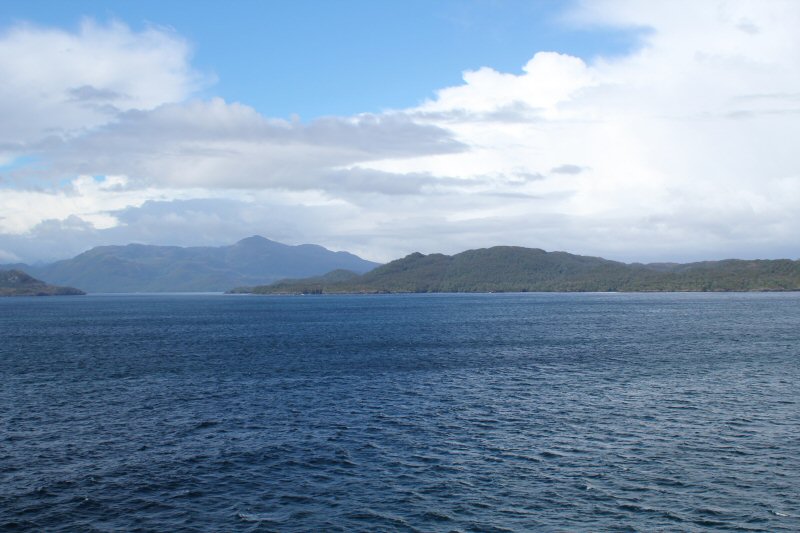
Cruising the Messier Strait
*-*-*
|
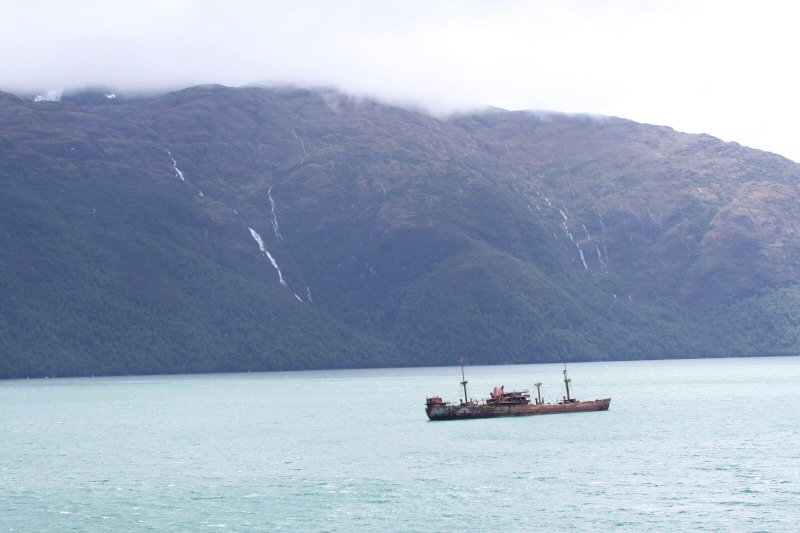
The Messier Wreck
*-*-*
|
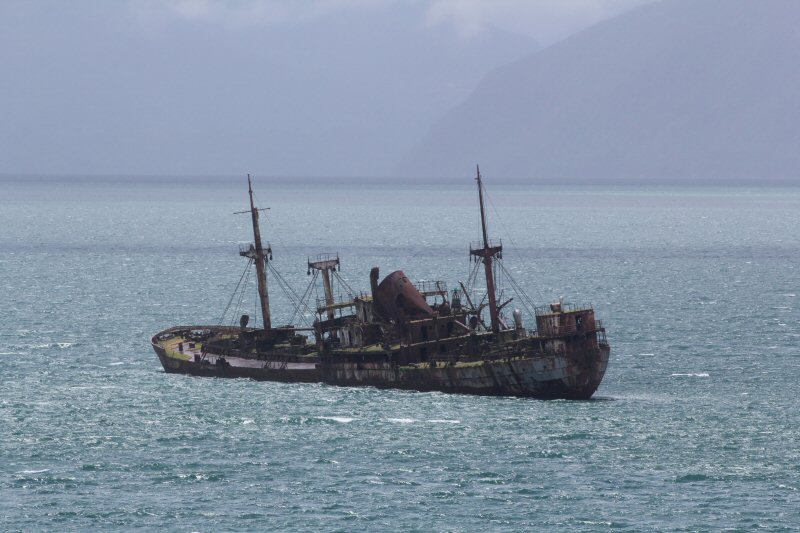
The Messier Wreck in all its glory!
*-*-*
|
The highlight of the day had to be the Tempanos Glacier which runs all the way down to the sea. It has regions of dark blue where the ice is so compacted there is no air present. Much of it is white and there are additionally some dark indigo streaks. At random times and random places, the ice calves off. We got to see a fair amount of calving activity.
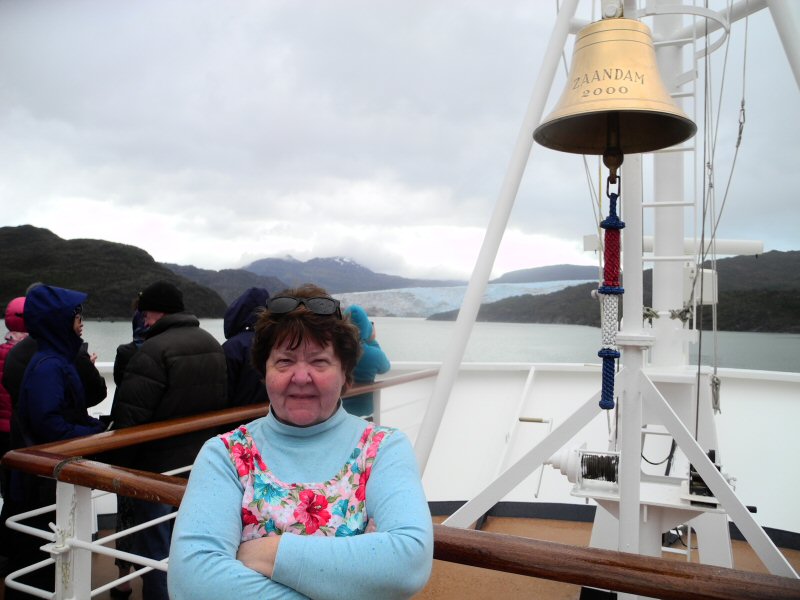
Lori aboard the Zaandam, Cruising The Tempanos Glacier
*-*-*
|
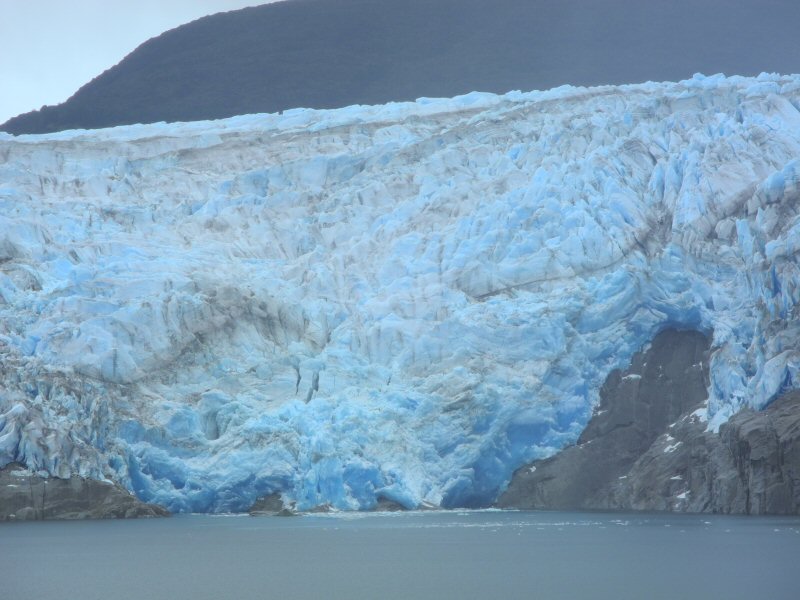
The Tempanos Glacier. Note the color variations with the intense blue indicating ice that is highly compacted.
*-*-*
|
The evening brought a fun game of group trivia in the Crow's Nest with our son and several new friends and, later, a show in the Mondrian Lounge: Tango Passion. Barry and I were blown away by the art and passion of the tango. The extremely talented performers were from Buenos Aires and had competed in a number of tango championships.
Dec 21, 2017: Day at Sea cruising the Sarmiento Channel and the Strait of Magellan. Today we continued down the coast of South America cruising the very diverse landscape of the Sarmiento Channel. It was overcast, rainy, cold and windy for most of the day. The view on both sides of the ship included show capped mountains, low islands, rock formations jutting up in irregular formation and narrow passages. Much of the day was spent in the Crows Nest just watching and talking with other passengers. The Crows Nest is a bar/gathering area at the front of the ship with panoramic windows that allow for a view of about 260 degrees. Christmas music was on the sound system and it is a very relaxing place to hang out.
Early in the day we heard a lecture on the indigenous peoples of the Tierra del Fuego region of South America that we were sailing into. At about 5:15 pm we passed through the Summer Passage which is a
very shallow region in the channel before it exits into the Strait of Magellan. It must be crossed at high tide and the water depth is reportedly only about 1 meter below the bottom hull of the ship. Also the ship must slow to about 5-7 knots.
Fortunately we made it through with the skill of our captain, Captain Chris Norman, and a little luck.
We treated ourselves to the Caneleto restaurant for dinner, This is a special Italian cuisine restaurant which you pay a small additional fee. These special theme restaurants (there are two on the Zaandam)
add a little variety and a special treat to the cruise. After dinner we did team trivia and then settled in to watch our passage into and through the Strait of Magellan, named after Ferdinand Magellan,
the Portugese explorer sailing for Spain. At the time is was thought that the western landmass extended all the way to the bottom of the world. He was convinced of it's existence as a passage to another ocean
and discovered it in 1520 (for the Europeans). He named it the Dragon's Tail. Later it was renamed for him. An exciting book on Magellan's voyage is "Over the Edge of the World" by Laurence Bergreen.
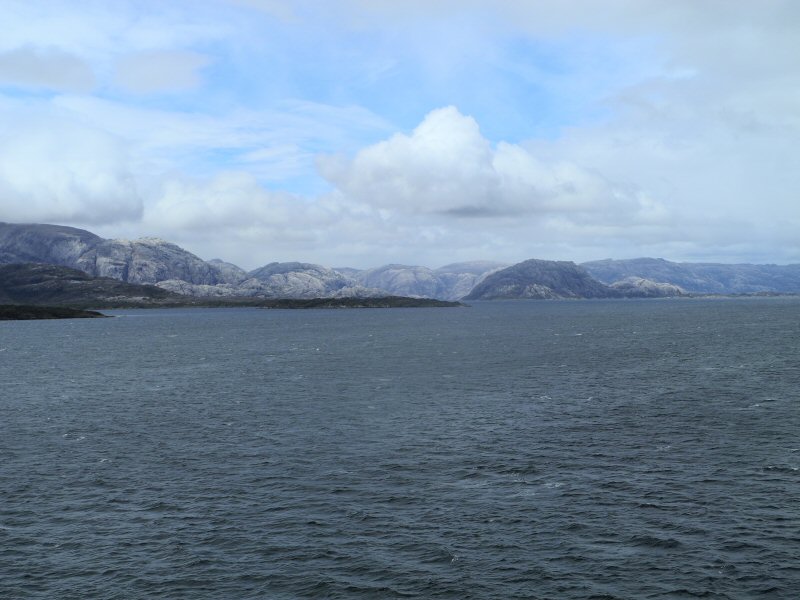
A view from the Sarmiento Channel
*-*-*
|
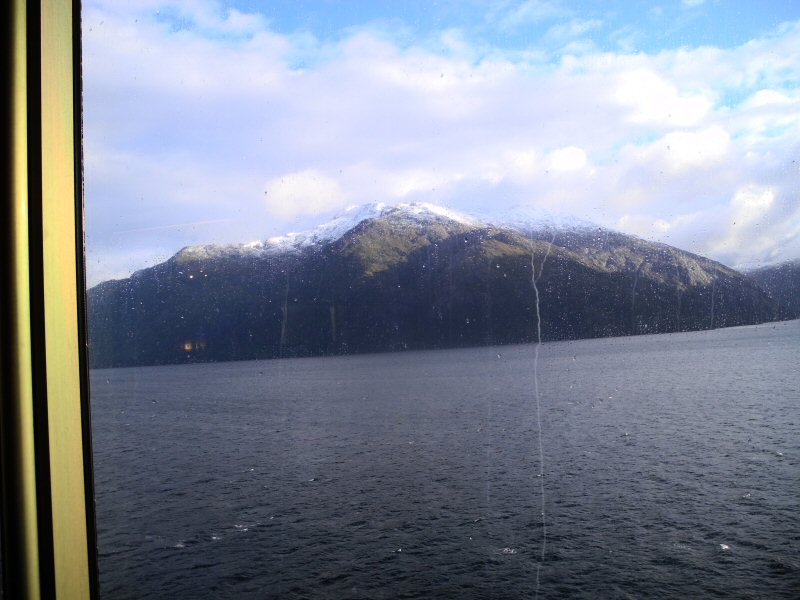
Snow-topped mountains in the Sarmiento Channel
*-*-*
|
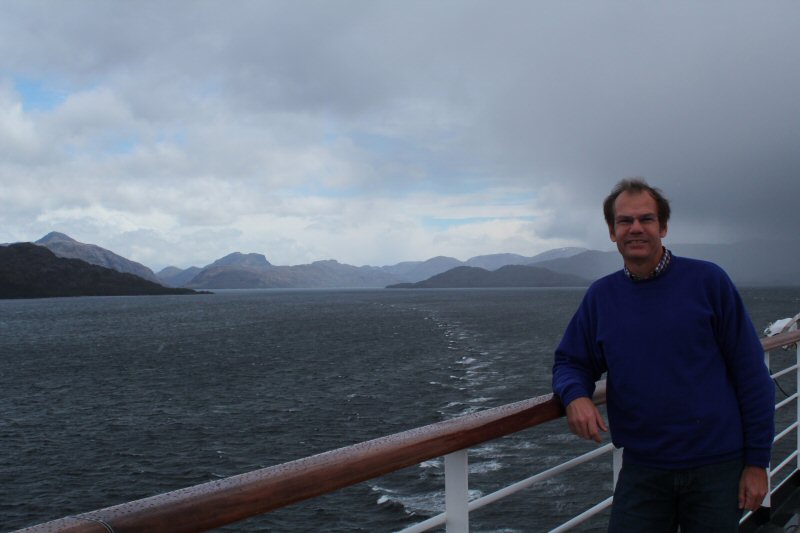
Barry aboard the Zaandam, cruising the Sarmiento Channel
*-*-*
|
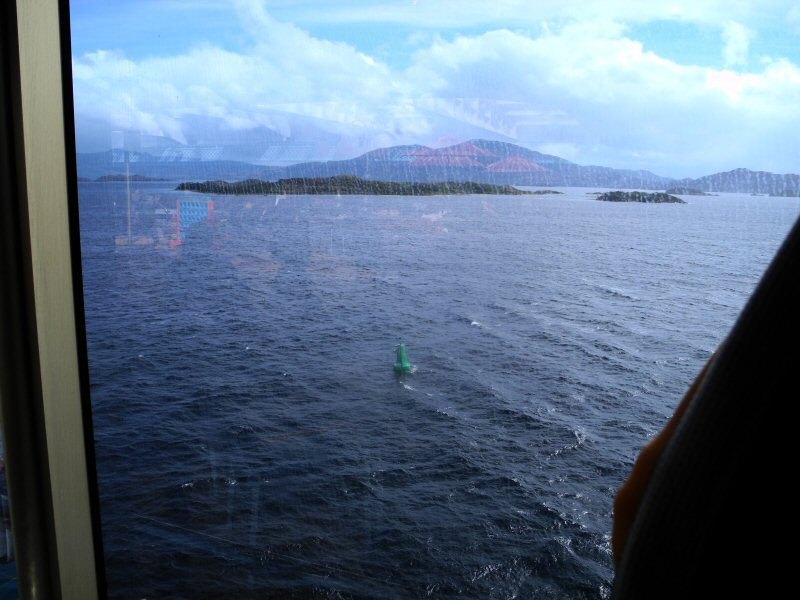
This green marker and a corresponding red on on the other side of the ship marks the navigable channel of deepest water in Summer pass, keel depth + 3 feet at high tide. Yikes! Not a very wide channel!!
*-*-*
|
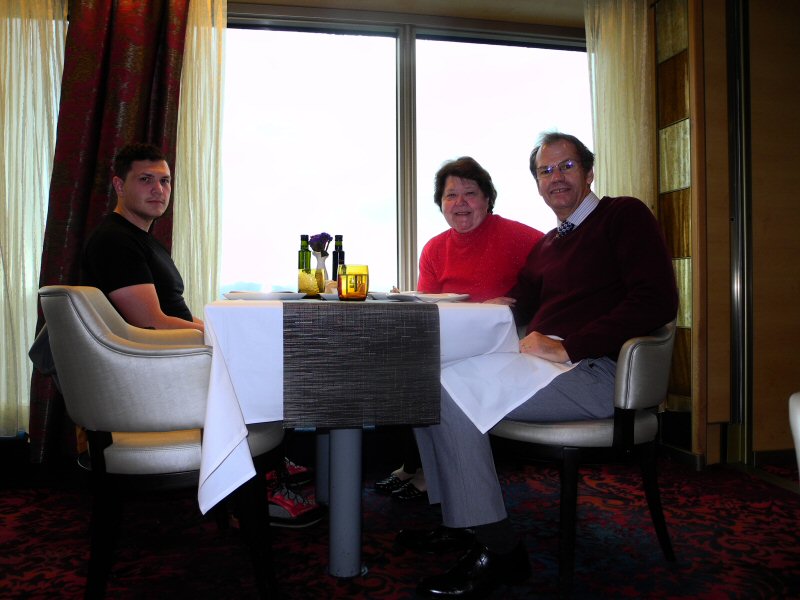
Dinner at Canaleto. Best view on the ship along with great service and fantastic Italian food.
*-*-*
|
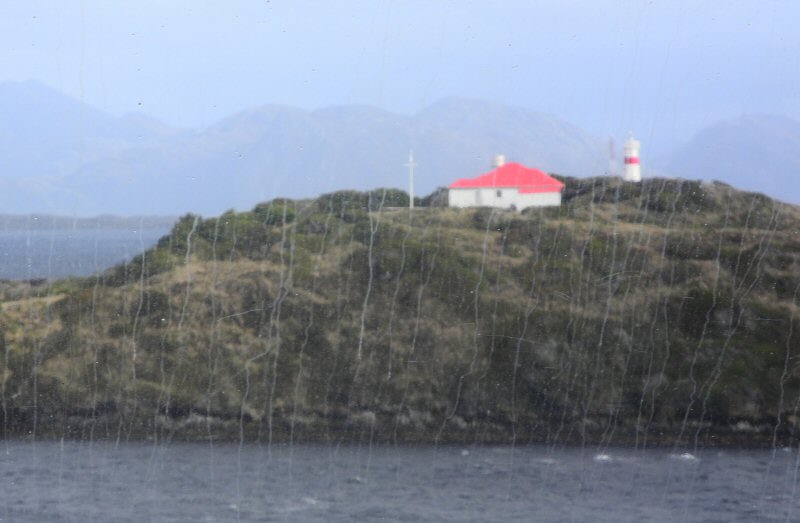
Lighthouse near the end of the world, entering the Strait of Magellan
*-*-*
|
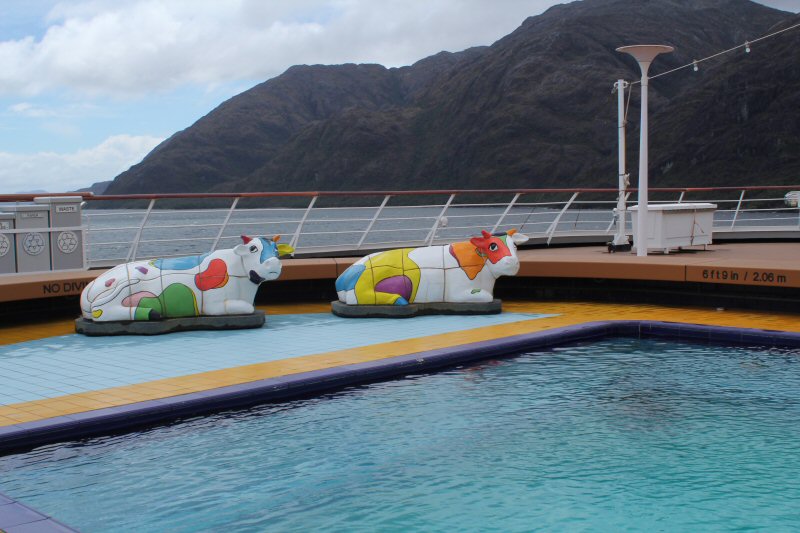
The Zaandam Cows lounging by the pool with a backdrop of the geography of the Strait of Magellan
*-*-*
|
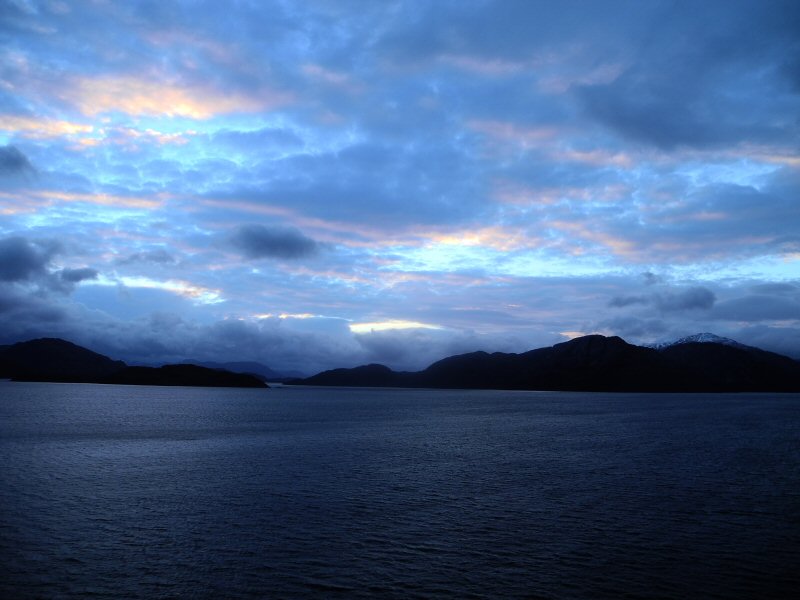
A sunset in the Strait of Magellan after 10 pm, Latitude around 54 degrees, South!
*-*-*
|
Dec 22, 2017: Puenta Arenas, Chile. Today we are headed to Punta Arenas (Sandy Point) and have a shore excurion planned to visit to the Nao Victoria Museum, the Maggiorino Borgatello Museum and the Cerro la Cruz Viewpoint. We would finish up at the city center at the statue of Magellan. Ferdinand Magellan is a rock star here. This port city is located at approximately the center of the Strait of Magellan and there are many references to Magellan around town.
The Nao Victoria Museum is a naval museum which is privately funded. It has replicas of a number of famous ships. First and foremost is the Victoria. This is the only ship of Magellan's five ship Armada de Molluca that made the entire round-the-world journey. The cargo it carried from the spice islands, cloves and cinnamon, was sufficient to pay for the entire cost of the expedition. It is fascinating to see the small size of this ship and the very crude conditions on-board. Also prenest was the Chilean ship, the Ancud which in 1843 was sailed by Manuel Bulnes from Castro to claim the Strait of Magellan and surrounding lands for Chile, just 1 day ahead of the French.
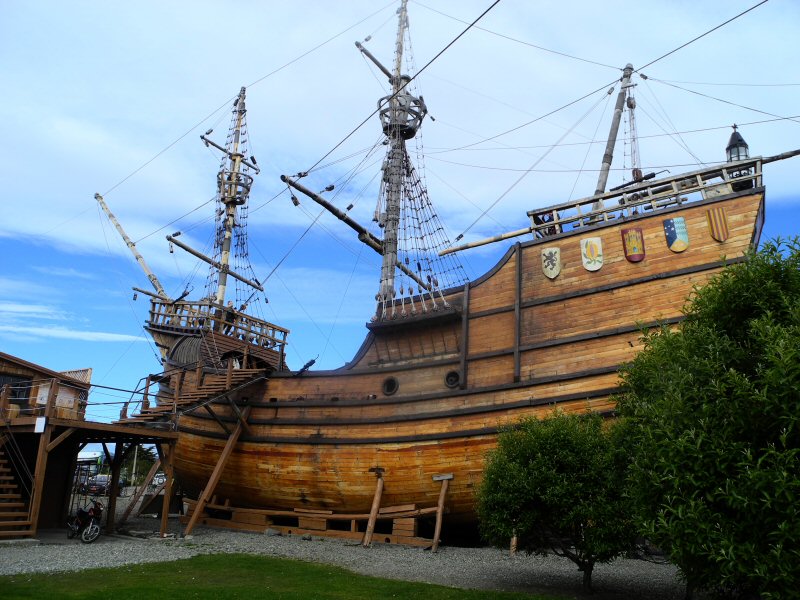
Victoria (Spain) replica, the only ship in Magellan's Armada to circumnavigate the earth.
*-*-*
|
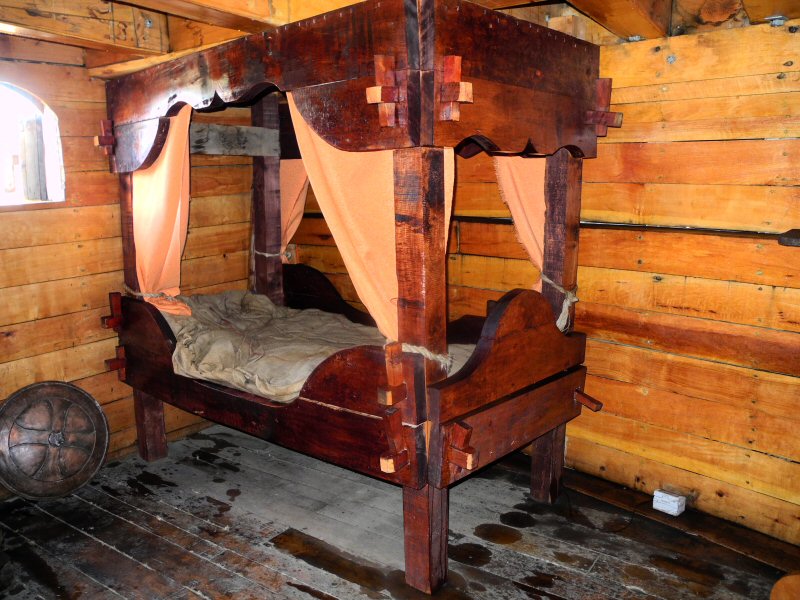
The Captain's bed in the Spanish ship, Victoria. Two things stood out, how small it was in length and width (the Spaniards were small) and how crude the accomadations were - sailing in the spanish Armada was not a life of luxury, even for the Captain!
*-*-*
|
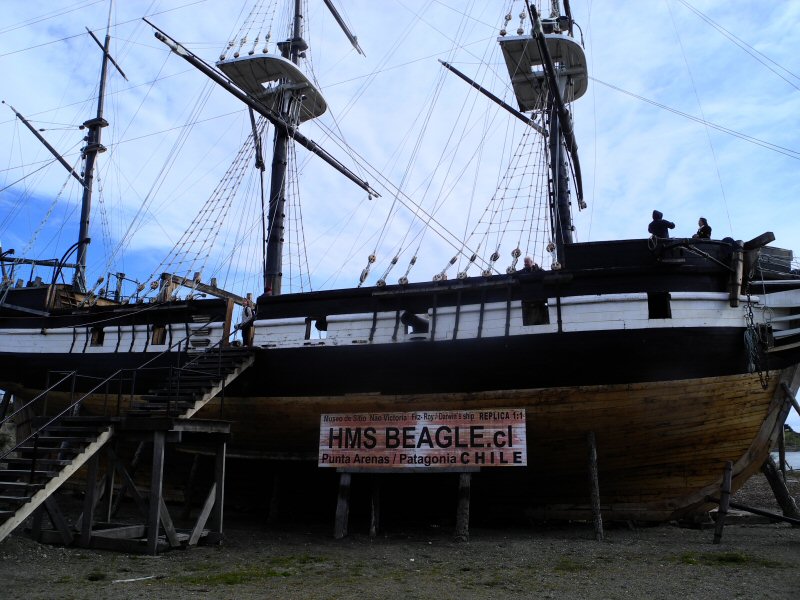
HMS Beagle (Brittish) replica, the ship made famous by Charles Darwin and the ship for whom the Beagle Channel was named.
*-*-*
|
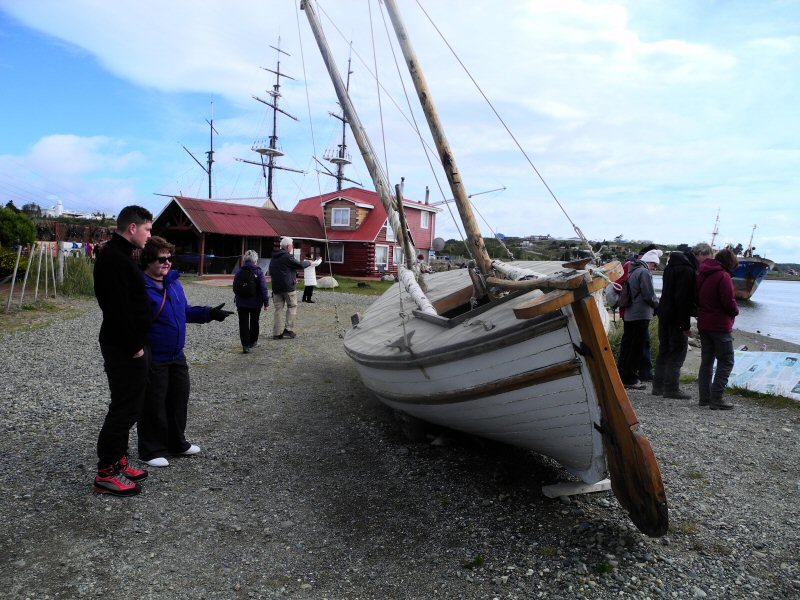
The James Caird, used by the Antarctic explorer Sir Ernest Shackleton to cross the ocean from Elephant Island to South Georgia after abandoning his ice-locked ship, the Endurance. It is very small and given the ocean swells we have experienced - that must have been one heck of a ride!
*-*-*
|
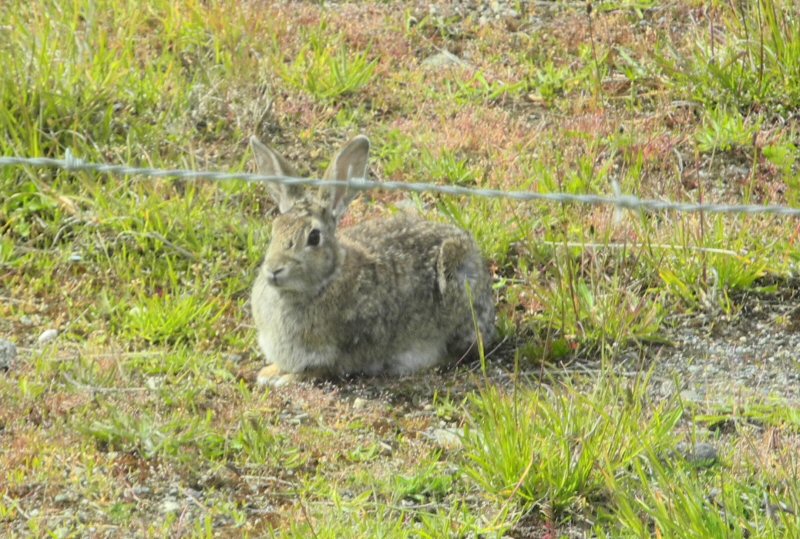
We saw this bunny in the grassy area near the bus while waiting for everyone to board.
*-*-*
|
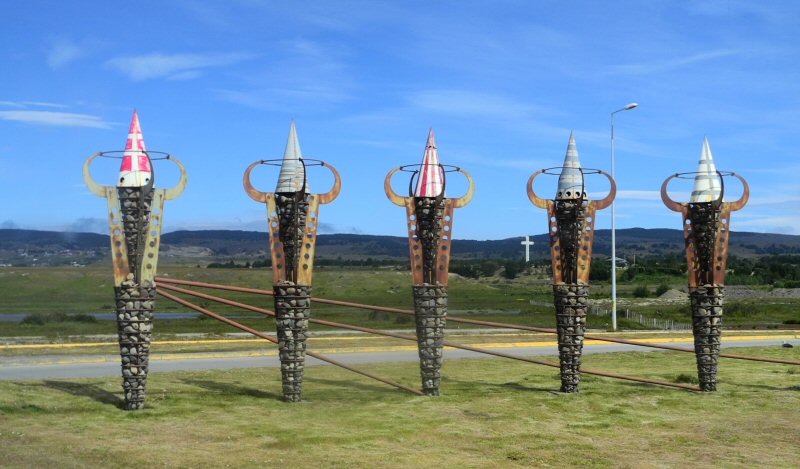
This was a sculpture along one of the roads in Punta Arenas. It is an interpretation of some of the bark costumes and body paint used by the native peoples of this area.
They were a sea faring people, living on the islands of Tierra del Fuego south of the Magellan Strait and Beagle Channel. In spite of the cold temperatures, they wore no clothing most of the time,
choosing instead to smear their bodies with seal blubber.
*-*-*
|
After leaving the ship museum, we headed into town to the the Maggiorino Borgatello Museum founded by Silesian monks. The museum is housed in part of the Catholic church and has a wealth of information about the early inhabitants, the early discoverers and the Catholic priests that came to convert the heathens. There was also some great animal exhibits as well as weaving, knitting and leatherworked artifacts.
All of the exibits had signs in Spanish (primary) and English (secondary). The english translations were clearly done by non-native-english speakers which made them very endearing. They did convey the necessary information. Many in the group wished we had had more time to wander this museum!
After that stop we went to an elevated point in the city for an overlook of the city and the Strait of Magellan.
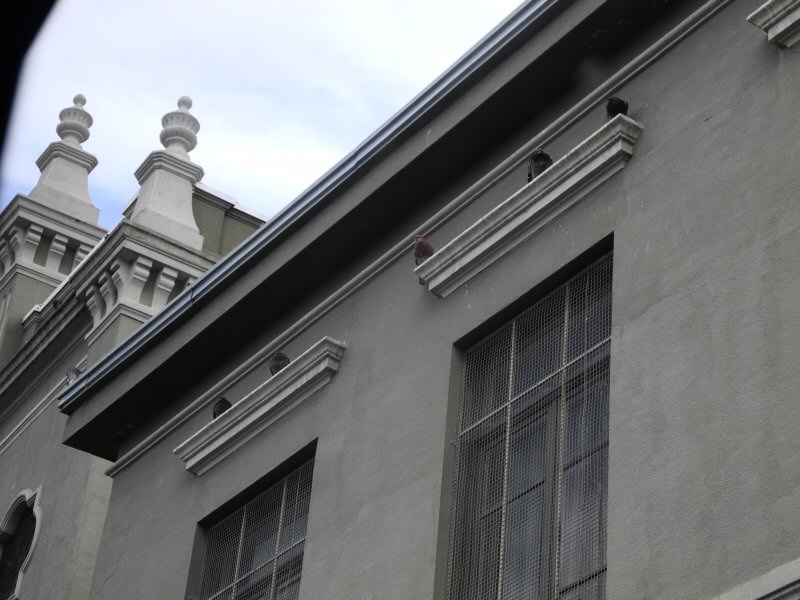
An artistic shot of the building housing the Maggiorino Borgatello Museum. I particularly liked the "shelves" for the pigeons and the variety of pigeon colors.
*-*-*
|
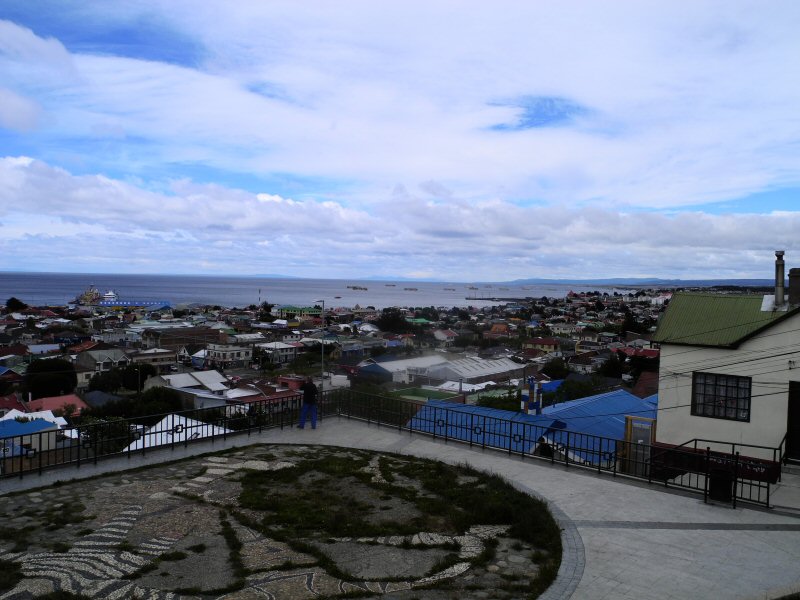
A view of Punta Arenas, the Strait of Magellan, and a mosiac of indigenous peoples. They had this wonderful costume that gave them "hammerheads" like hammerhead sharks.
They also painted their bodies like Zebras but no explanation was given for that.
*-*-*
|
Next we headed for the central square where we had time for some shopping and to look at the statue honoring Magellan. This is a very picturesque area.
We had hoped to find an internet cafe, but it was lunchtime and everything was really crowded. Lori shopped in the artisan carts and found a Mate' cup.
The indigenous peoples would share a cup of tea using a communal cup and a silver straw that had a strainer bowl built in. This custom was picked up by early settlers and continues to this day. We saw
several examples of this practice among the craftspeople of the markets. The cups were usually carved from gourd with an almost primitive design while the straws were very intricately decorated silver.
The cup cost 10000 pesos or about US $15.00. Then we located our bus and headed back to the ship.
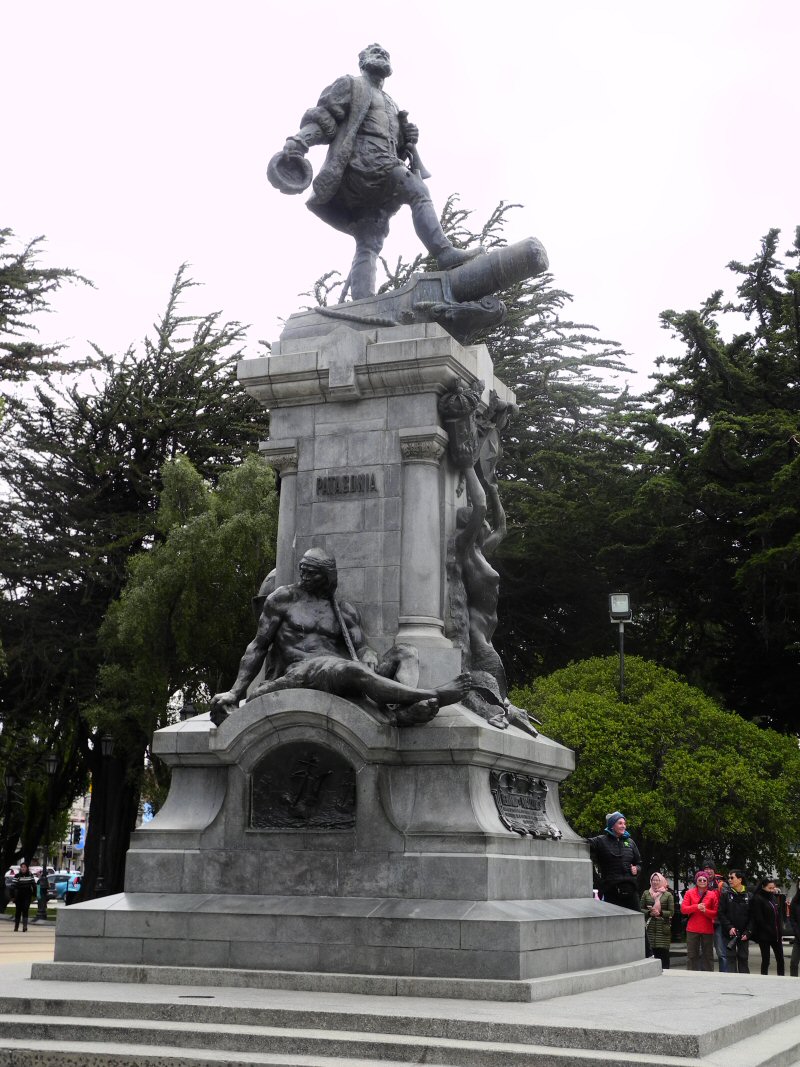
A monument honoring Magellan and the indigenous peoples of the area.
*-*-*
|
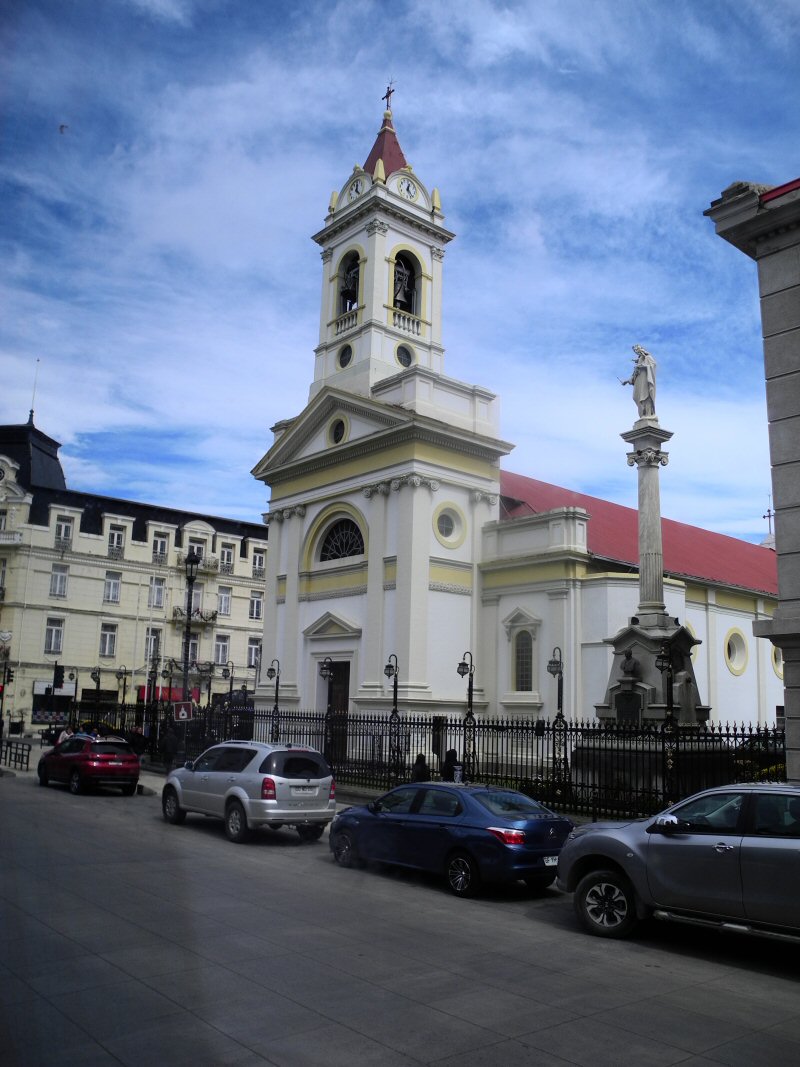
A church in Punta Arenas on the main square.
*-*-*
|
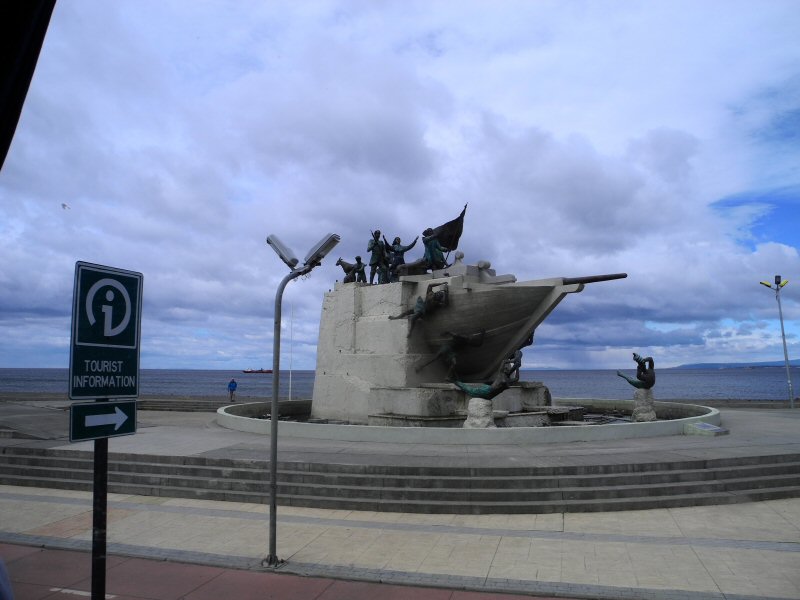
A monument honoring the early Chilean settlers onboard the Ancud
*-*-*
|
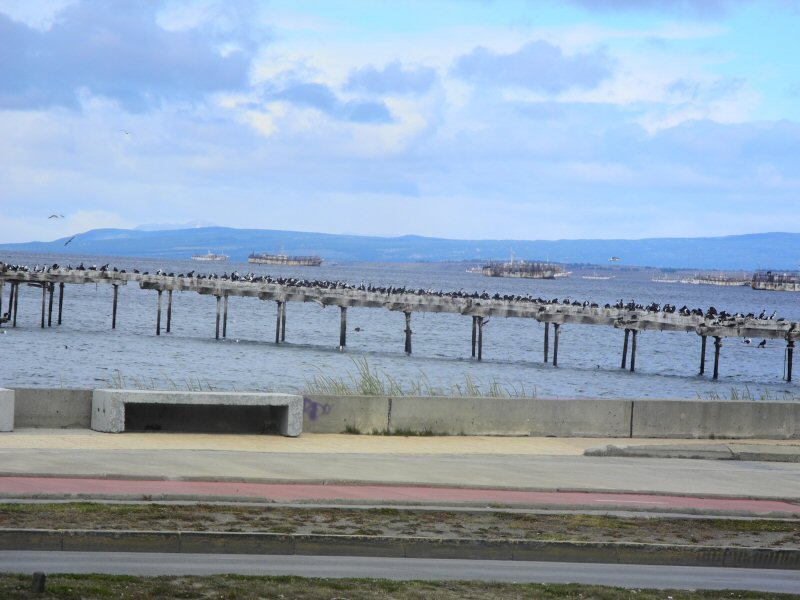
A derelict pier with many cormorants and, in the background, what appear to be derelict ships. According to our guide they were Asian fishing vessels most likely crewed by convicts.
They fish for squid and come to port once a month or so for supplies and repairs.
*-*-*
|
Dec 23, 2017: Cruising Glacier Alley and stopping in the port of Ushuaia, Argentina. For early risers, at 6:30 am we started a cruise through a passage called Glacier Alley
where there are 6 named and a number of unnamed glaciers. Then we continued our passage along the Beagle Channel. Beagle Channel is named after the British ship the HMS Beagle.
The ship and the channel were made famous by a published book by Charles Darwin called "The Voyage of the HMS Beagle". Since the Spanish Armada protected the Strait of Magellan from the British and Portugese,
the British wanted to find a second passage.
In order the glaciers we saw were the Espana, Romancha, Alemania, Francia, Italia and Hollande. They were named after the countries of origin of the discoverers.
Each has unique features. Francia is the smallest and Italia is the only tidewater glacier, meaning it comes down to the water's edge. All provide meltwater that creates a very visible milky green zone called a "lens" where the fresh water of the glacier mixes with the salt water of the channel.
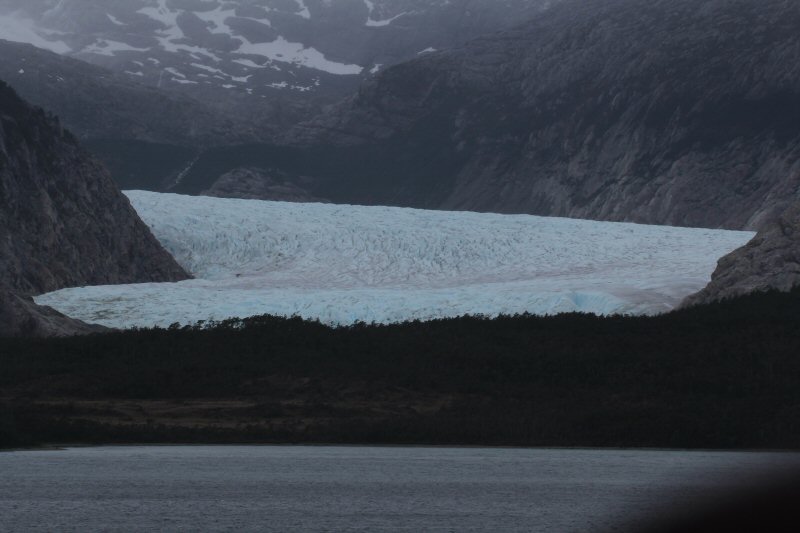
Glacier Espania - named for Spain
*-*-*
|
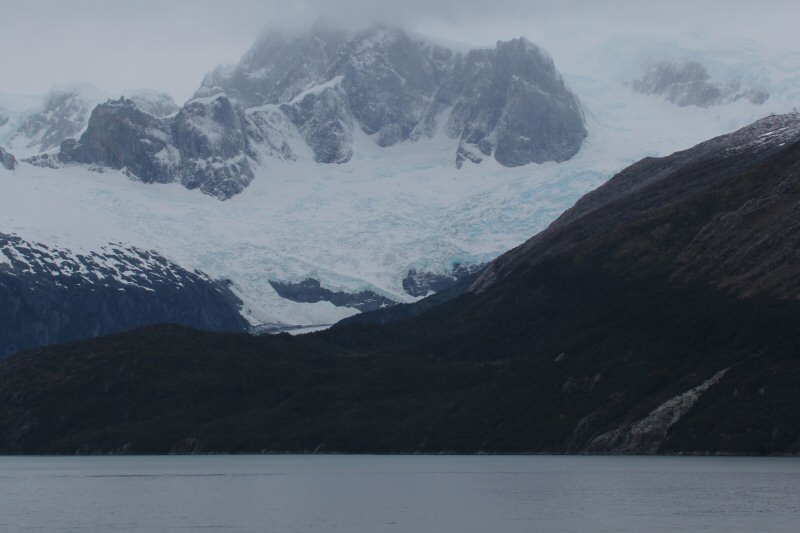
Glacier Romanche - named for Switzerland. This is the largest glacier in Glacier Alley.
*-*-*
|
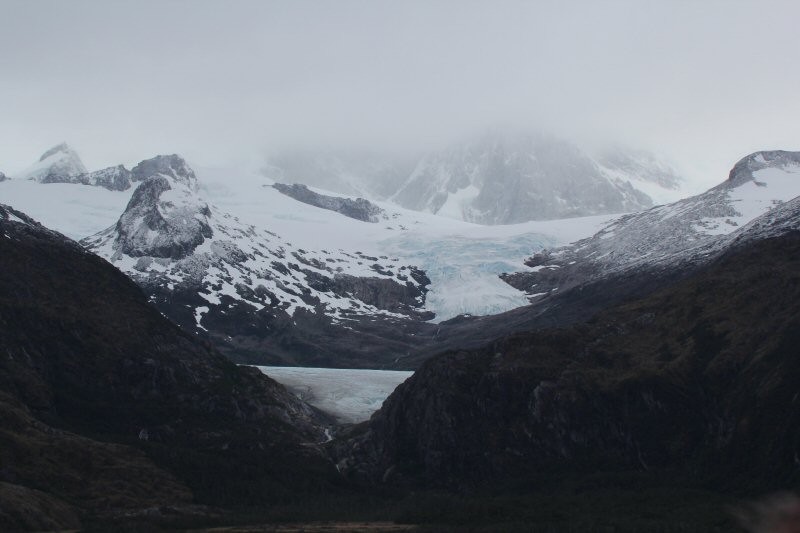
Glacier Alemania, named for Germany.
*-*-*
|
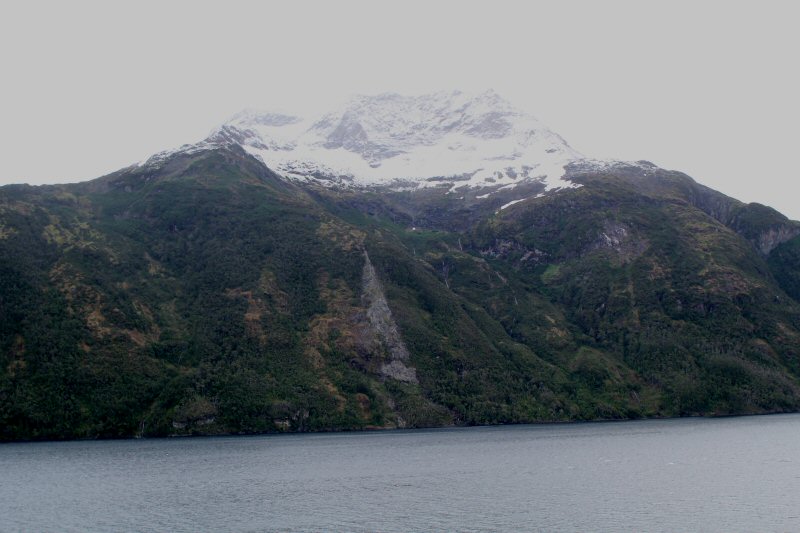
A snow capped mountian among the glaciers. There are numerous mountains covered in snow which are not glaciers. The snow has not packed sufficiently and there is no movement. Glaciers are in motion, albeit very slowly.
*-*-*
|
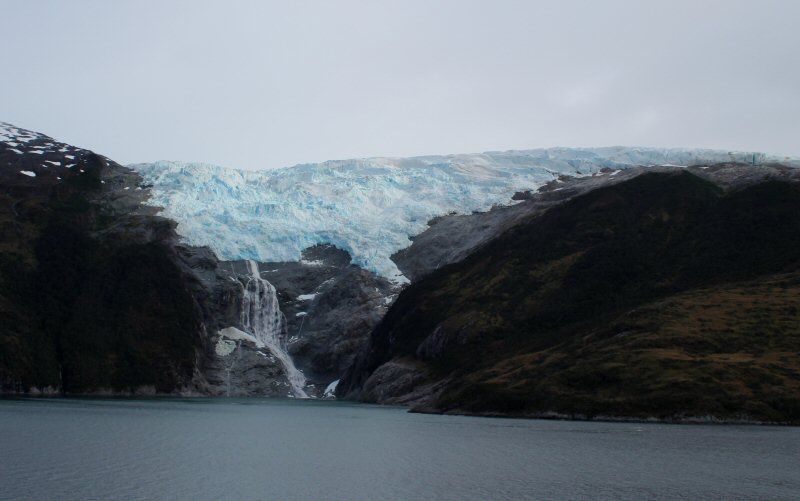
A second view of Glacier Alemania - named for Germany, with a lovely waterfall.
*-*-*
|

Glacier Francia - named for France. This is the smallest glacier.
*-*-*
|
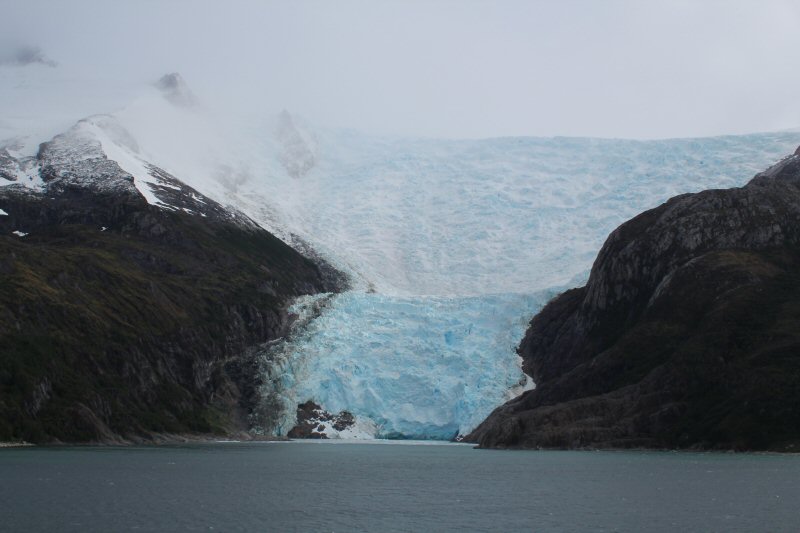
Glacier Italia - named for Italy. This is the only tidewater glacier in Glacier Alley.
*-*-*
|
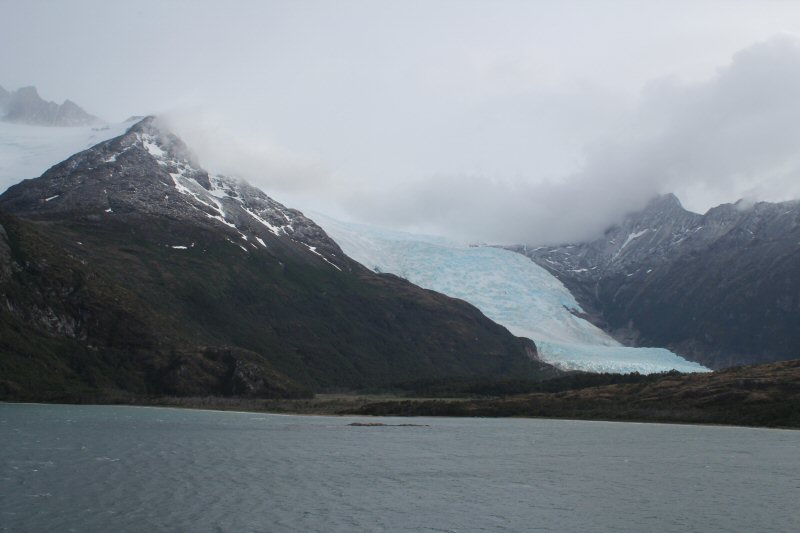
Glacier Hollande - named for Holland.
*-*-*
|
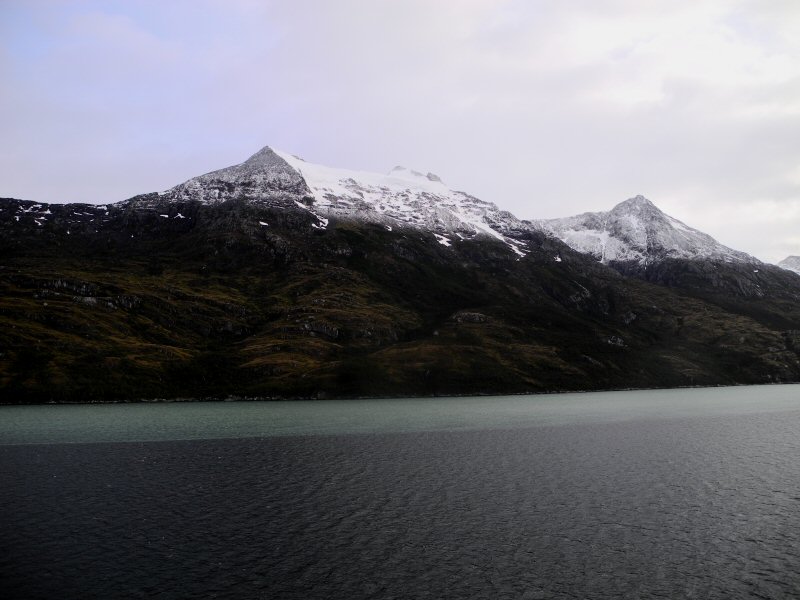
A picture showing the lens in the water - the milky green area near the shore where fresh water glacial melt is mixing with salt water from Beagle channel.
*-*-*
|